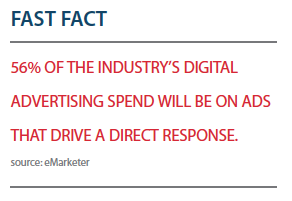 Today’s mobile-everywhere environment is disrupting pharma’s traditional marketing strategies, but at the same time it provides more ways to reach more people in the ways they want to be reached. Determining where and when that is may be more difficult these days, as mobile consumers tend to follow a non-linear decision-making process, posing challenges as companies attempt to reach consumers across all channels. Marketing teams need to break down channel silos to successfully design a multi-channel plan that features mobile right from the beginning. Experts say the industry should stop viewing mobile as the new kid on the block and consider it as another tool in the traditional marketing mix.
Today’s mobile-everywhere environment is disrupting pharma’s traditional marketing strategies, but at the same time it provides more ways to reach more people in the ways they want to be reached. Determining where and when that is may be more difficult these days, as mobile consumers tend to follow a non-linear decision-making process, posing challenges as companies attempt to reach consumers across all channels. Marketing teams need to break down channel silos to successfully design a multi-channel plan that features mobile right from the beginning. Experts say the industry should stop viewing mobile as the new kid on the block and consider it as another tool in the traditional marketing mix.
With words such as omni-channel and digital omnivores describing the marketplace and its members, pharmaceutical companies also must become omnipotent in the way they deliver their messages — using everything, everywhere.
“Today’s and tomorrow’s successful life-sciences marketer is going to create omnichannel experiences that are relevant and helpful to targeted customers, that become vital to their day-to-day lives, and within which specific brands are key and critical components," says Tim Garde, chief operating officer, Calcium USA. “Knowing the habits and desires of the specific audience is critical to delivering effective messaging."
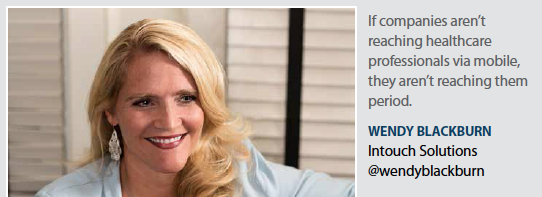 For example, the way that the director of pharmacy services for a major payer organization seeks and processes information is likely to be radically different from a 30-year-old medical school graduate in a family practice in suburban Virginia. To understand how such very different, but potentially important, target audiences want to receive information about specific types of products or services requires careful research and planning and a very deep appreciation of and respect for those customers’ very real needs, he says.
For example, the way that the director of pharmacy services for a major payer organization seeks and processes information is likely to be radically different from a 30-year-old medical school graduate in a family practice in suburban Virginia. To understand how such very different, but potentially important, target audiences want to receive information about specific types of products or services requires careful research and planning and a very deep appreciation of and respect for those customers’ very real needs, he says.
“Marketers must consider the multitude of ways that target audiences may seek information and try to deliver it on every level," Mr. Garde continues. “For example, field force personnel should be identifying how to deliver information through the most efficient method to target physicians by asking the HCPs where they want to receive it. With respect to information delivery, we are in an intense, rapidly changing transition period. How healthcare professionals want to receive information today — as opposed to five years or even one year ago — is highly dependent on factors such as their specific interests, their age, their degree and type of specialization, and the information processing habits that they have accumulated over time."
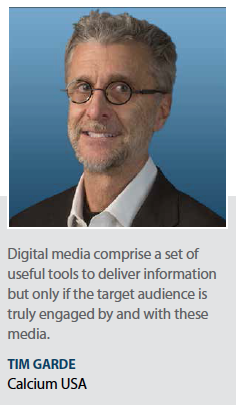 The good news is that many physicians have become more comfortable using a constellation of media, channels, and devices to get specific types of information during their busy day, says Lee Schweizer, director, eBusiness development, Frontline Medical Communications, citing his own observational data.
The good news is that many physicians have become more comfortable using a constellation of media, channels, and devices to get specific types of information during their busy day, says Lee Schweizer, director, eBusiness development, Frontline Medical Communications, citing his own observational data.
“The fact is marketers need to communicate and track behavior on all channels," he says. “Differences emerge even within a specialty; information-gathering trends are highly personal. While age plays a role, other factors include access, specialty information needs, physician office logistics, and personal preference."
The key to successfully using digital media — mobile and otherwise — is to match the correct media with the target audience that is truly engaged by them.
“Many HCPs simply aren’t going to use Twitter, may even avoid email as much as possible, and may still get most of their current update information in very traditional ways — from journal articles or medical news updates, for example," Mr. Garde says. “But the difference is, they get all that traditional information through a mobile device."
Mr. Garde believes that healthcare marketing today and for the immediately foreseeable future is going to be all about the needs of the customer. The “customer first, mobile first" mindset is about creating and taking advantage of “micro moments" of attention and information provision at the point of care for both the physician and his or her patient. It is irrelevant how this is done from the customer’s perspective. It is not about apps or websites. It is about the customer experience, customer convenience, and concise, accurate content delivery at a point in time. Mobile technology can facilitate such “micro moments" of information transition and acceptance, but only if the information is useful and valued by the customers when they need it, he says.
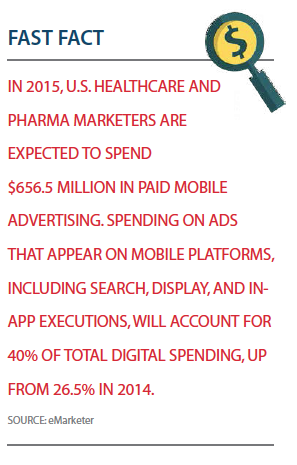 As cliché as it sounds, it really does all start with the patient, says Wendy Blackburn, executive VP, Intouch Solutions.
As cliché as it sounds, it really does all start with the patient, says Wendy Blackburn, executive VP, Intouch Solutions.
“It’s about understanding the customer, his or her mindset, preferences, and behaviors," she adds. “Marketers have to take the time to truly understand the patient perspective, the patient journey, and the HCP workflow."
Today’s HCPs are extremely digital savvy and look to their mobile devices to find the information they need when they need it.
“It’s pervasive; mobile is just a no-brainer for reaching HCPs," Ms. Blackburn says. “If a company is not reaching healthcare professionals via mobile, it’s not reaching them period."
The bottom line, which hasn’t changed much over time, is that healthcare professionals want to receive information where it is most convenient to them, where it is embedded within their workflow, and in a meaningful and engaging format. However, the part that has changed is that today HCPs want to receive information via mobile devices.
“Healthcare professionals have long been known to be early tech adopters, and today they are more tech savvy than ever before," Ms. Blackburn says.
Recent Intouch Solutions research showed a dramatic increase in the digital savviness of physicians in just the past four years.
“For example, physician ownership of iPads has more than doubled since 2011, and use of tablets during patient consultations has more than quadrupled," Ms. Blackburn says. “Use of iPhones remains strong as well. Professionals expect to be able to easily find treatment info on their mobile devices at the point of care."
In terms of presentation of the information, physicians want what everyone else wants: pertinent data delivered fast.
 “In today’s always-on environment, healthcare professionals are similar to many other professionals, looking for on-demand, easily digestible information in the form of infographics and video vignettes that mirror the communication styles of popular media publications and online apps," says Bryan Hill, chief technology officer, Cadient, a Cognizant company. “Five years from now, this need for easily digestible information will continue unabated, driving even more immersive formats such as augmented reality, video conferencing, and professionally focused avatars, and assistants that serve as a Siri for HCPs."
“In today’s always-on environment, healthcare professionals are similar to many other professionals, looking for on-demand, easily digestible information in the form of infographics and video vignettes that mirror the communication styles of popular media publications and online apps," says Bryan Hill, chief technology officer, Cadient, a Cognizant company. “Five years from now, this need for easily digestible information will continue unabated, driving even more immersive formats such as augmented reality, video conferencing, and professionally focused avatars, and assistants that serve as a Siri for HCPs."
Mobile Challenges
The challenge, Mr. Hill says, is to craft mobile experiences that are truly integrated in an overall program rather than as one-off or novelty solutions. Not only is integration difficult, but it is made more challenging because the overall mobile marketing ecosystem is changing so rapidly, with marketers needing to leverage SMS, apps, mobile Web, mobile coupons, QR codes, and the Internet of Things, not to mention Apple Watch, Amazon Echo, and iBeacons.
“Planning for and executing in the multi-channel marketing environment is more important than ever before," he says.
Integrating mobile into the broader brand ecosystem is a definite challenge, Ms. Blackburn agrees.
“The plethora of customer viewpoints and touchpoints create a very complex web, of which mobile is just a part," she says. “Marketers must make sure their mobile program is its own thoughtful strategy woven into that ecosystem, and not just a small-screen version of their current brand message."
Keeping up with technology and the rapid speed of change is another big challenge for pharma company marketers. Once a pharma marketer has mastered one mobile discipline and finally launches his or her first mobile initiative, everything has already changed.
“The definition of mobile keeps growing, and so does the challenge to stay current and relevant," Ms. Blackburn says.
“How one needs to deliver those messages can change overnight," Mr. Garde says. “The technology of today may be outmoded in as little as six to nine months, but the messages may have value for years."
Another challenge is data security. In order for HCPs or patients to be willing to share information, high levels of communication security will need to be developed and maintained.
“Data security and the protection of personal information is rapidly becoming the critical issue to whether HCPs, patients, caregivers, and others in the world of healthcare will be willing to communicate online using mobile and other forms of electronic technology," Mr. Garde says. “This may not be keeping the average pharma marketer up at night yet, but it should be an issue that he or she is highly focused on for the near future."
Mr. Schweizer says there are numerous other challenges, ranging from logistical hurdles to fear. For example, the inability to run newer banner units on publishing partner mobile-optimized sites; dynamic banners that are only available in Flash and are not mobile-enabled; products with black box warnings or have only “desktop approved" PIs; and the fact that advertising tracking with some devices and/or browser is more problematic with mobile. But the greatest challenge of all may be the industry’s aversion to change, he adds.
Improving Mobile Strategy
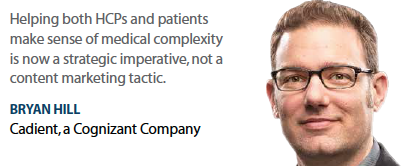 According to a recent Manhattan Research report, mobile is a critical channel for reaching physicians and other healthcare professionals with digital information. At the same time, pharma marketers face numerous barriers to mobile-optimizing their digital properties, from cost to legal and regulatory concerns, but given the way professionals are using smartphones, it’s really a must-have, the report states.
According to a recent Manhattan Research report, mobile is a critical channel for reaching physicians and other healthcare professionals with digital information. At the same time, pharma marketers face numerous barriers to mobile-optimizing their digital properties, from cost to legal and regulatory concerns, but given the way professionals are using smartphones, it’s really a must-have, the report states.
Manhattan Research also reports that four out five physicians now use tablets, and the percentage of doctors using smartphones at work is plateauing in the low 80th percentile.
“We are way past the tipping point," Ms. Blackburn says. “Statistics show that overall time spent on mobile devices at 51% is now significantly higher than desktop use at 42%."
Marketers will want to consider what the opportunities are in terms of pinpointing the where and the when consumers will be seeking answers, especially from a device that is in the palm of their hand.
“Have something relevant to say and value to offer," Ms. Blackburn suggests. “Apps, devices, and even SMS text campaigns have been proven to effectively fuel prevention and adherence programs. There is a very good chance that your existing product or program can be enhanced with these tools."
While digital allows for hyper-targeting, using only prescription and other big data to make targeting decisions may leave a fair number of valuable users and prospects on the table, Mr. Schweizer says.
“General awareness campaigns are becoming a thing of the past," he says. “Contextual targeting paired with a smaller degree of general awareness may be the answer."
The complex healthcare system provides an opportunity to add value in terms of service to both physicians and patients, Mr. Hill says. In many ways, patients respond to the same content service mindset as they try to navigate an increasingly complicated pathway of providers, insurance claims, and complex therapeutic regimens.
“Helping both HCPs and patients make sense of medical complexity is now a strategic imperative, not a content marketing tactic," he says. “As an increasing number of HCPs are working within large healthcare systems, the role of content-driven value-added services is an increasing point of leverage for marketers to reach customers and create an ongoing, and positive, customer experience."
This will require thinking well-beyond apps or Websites to include optimizing emails for mobile, allocating advertising budgets to mobile, and integrating mobile search engine marketing into the mix.
“Marketers shouldn’t take for granted the intimate opportunity they have to be in consumers’ and physicians’ pockets, purses, and lab coats," Ms. Blackburn says. “Earn that opportunity. Make it worth their while, and it will be worth yours." (PV)


















